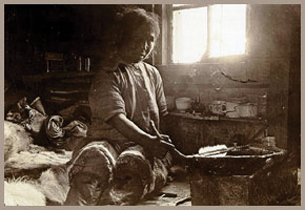Module 1
1. Module 1
1.23. Lesson 5
Module 1—Thinking Energy
Lesson 5—Molar Enthalpy
 Get Focused
Get Focused

Historically, Inuit living in the Arctic depended primarily on seal oil prepared from blubber as a fuel source for light, cooking, and heating. While using seal oil may seem peculiar, it was an ingenious use of this resource because of the oil’s high caloric content, availability, and ease of use.
In most modern societies, factors beyond availability and ease of use must be considered when choosing fuels. Cost and transportation are important factors. However, perhaps the most important consideration is energy richness.
How would you define the energy richness of a fuel? Could you incorporate some of the concepts you learned about in earlier Module 1 lessons to define energy richness? How might you determine the energy richness of a fuel? In this lesson you will learn how to use enthalpy changes to assess fuels.
Consider the following question as you complete Lesson 5:
-
How can the energy richness of different fuels be compared?
 Module 1: Lesson 5 Assignment
Module 1: Lesson 5 Assignment
Download a copy of the Module 1: Lesson 5 Assignment to your computer now. You will receive further instructions on how to complete this assignment later in this lesson.
In this lesson, you will also receive further instructions on and you will complete part of the Module 1 Assessment: Evaluating Different Fuels.
You must decide what to do with the questions that are not marked by the teacher.
Remember that these questions provide you with the practice and feedback that you need to successfully complete this course. You should respond to all the questions and place those answers in your course folder.